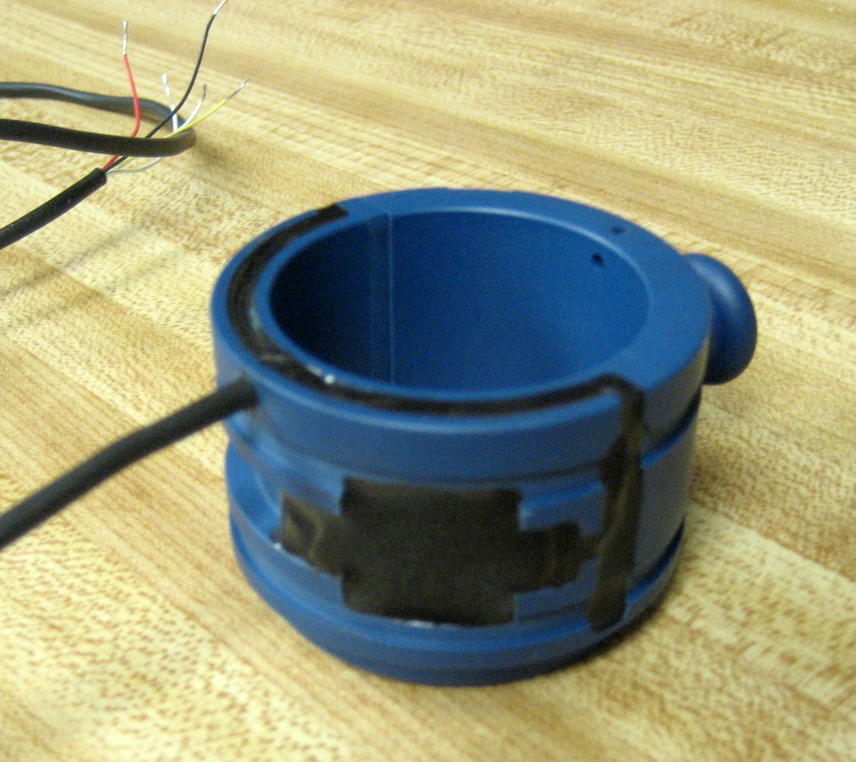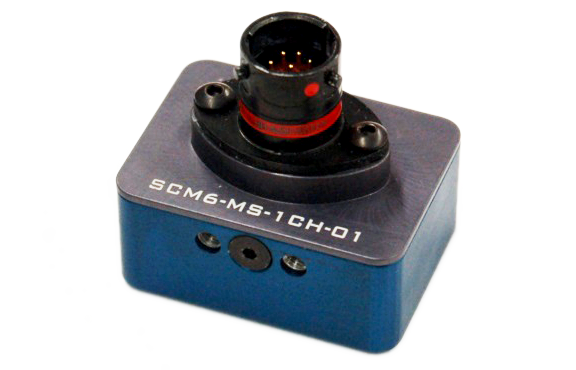
From the first race-able driveshaft torque sensor system which helped Scuderia Ferrari win the 2002, 2003, and 2004 Formula 1 World Championships, to the current FiA-mandated clutch shaft torque sensor system used by all Formula 1 and Le Mans P1 teams today, MagCanica has its roots in the highly demanding motorsport industry. MagCanica torque sensor systems offer a truly non-contact and remarkably non-invasive method of torque measurement with high accuracy and reliability in the most compact, lightweight, and robust package available on the market.
As a result, all Formula 1 teams, all Le Mans hypercar class teams, and the entire LeMans GT grids run mandatory MagCanica torque sensor systems, in addition to a growing customer base now emerging across the WEC LMH, WEC GT3, IMSA GTP, Cross-Country Rally, IndyCar, NASCAR, and Formula E categories. Each MagCanica motorsport torque sensor system is constructed for the specific needs of the client racing team and relevant governing body and is provided with superior levels of technical service and support.
Prior to the year 2000, Ivan Garshelis, considered to have been the world’s leading expert in torque measurement, had recently invented the magnetoelastic torque sensor which used a pressed on ring (link to paper). While working with Sami Bitar, Sami and Ivan developed a version of the technology which did not require a ring but instead utilized remanent magnetization of the shaft itself (described in the Technology Page).

Figure 1 Early generation drive-shaft torque sensor installed into dyno test-cell sensor, tested around the year 2002
Building upon this development, Sami Bitar incorporated MagCanica in California, and brought in Ivan Garshelis as a mentor and CTO. While MagCanica was a small company at the time, based on the significant need for torque measurement, MagCanica was able to partner with a Formula 1 racing team backed by a major world automotive OEM to develop a torque sensor for its vehicle. The prospective client was interested in MagCanica’s technology yet skeptical that it could operate reliably and consistently on its racecar. It therefore contracted MagCanica for an initial proveout Phase I project, to instrument its Formula 1 engine dynamometer with a torque sensor system and to compare its performance with that of the instrument-grade torque sensor on the dynamometer test cell.

Figure 2 Early generation drive-shaft torque sensor installed into dyno test-cell sensor, used for production around the year 2004
Within four months, MagCanica custom-developed and successfully delivered a torque sensor system for the engine dynamometer, proving not only the effectiveness of the technology, but also the superior dynamic response of the Magcanica torque sensor as compared with that of the dynamometer reference torque-meter signal. Based on the positive results of this Phase I project, the Formula 1 team contracted MagCanica to a multi-year Phase II development effort to develop customized torque sensor solutions for three further applications:
- Single-cylinder engine dynamometer torque sensor
- In-vehicle driveshaft (half shaft) torque sensor
- In-vehicle clutch shaft (transmission input shaft) torque sensor

Figure 3 First generation engine output torque sensor, tested around the year 2000
Each application presented major challenges and significant technological barriers that had to be overcome. Additionally, in the case of the in-vehicle applications, each system had to be reliable and accurate enough to be considered race worthy, such that it could be used as an input to the racecar’s onboard computer to assist in controlling the vehicle.

Figure 4 First generation in-vehicle engine output torque sensor, tested around the year 2000

Figure 5 Early generation drive-shaft torque sensor with fully integrated electronics, used for production around the year 2007
During Phase II, MagCanica worked closely with the F1 team client to develop and continuously improve the reliability and accuracy of its clutch shaft and driveshaft torque sensor systems, enabling them to continuously run at all races, test sessions, and powertrain dynamometer tests. As a result of the success of the Phase II program, the client renewed its commitment and entered into a new Phase III multi-year agreement with MagCanica for high volume supplies of race-worthy torque sensor systems for multiple applications, as well as a custom low-volume supply of torque sensor systems for its powertrain dynamometers. This comprehensive project and the associated developments led MagCanica to continue to expand its presence in Formula 1 and racing markets world-wide, and continuously update its product line, gradually offering higher levels of accuracy, service, and reliability.
Several years after the introduction of the drive-shaft torque sensor, in 2007, MagCanica further optimized its in-vehicle driveshaft systems by integrating the signal-conditioning electronics (which historically had been located in discrete modules) directly into the sensor housings. This integrated architecture allowed the client team to achieve even further weight and footprint reductions and rendered the MagCanica in-vehicle torque measurement system the clear industry leader in terms of packaging and non-invasiveness. The only required input was DC power, in which an analog output with integrated anti-aliasing filter representative of the torque sensor, and industry standard resistive temperature sensor was provided. No further signal conditioning was required.

Figure 6 First prototype of the SCM6 signal conditioning module with integrated DSP, manufactured in 2011
MagCanica took another major step forward in the year 2012 by introducing a digital signal processor (DSP) into the signal conditioning circuitry, with integrated CAN digital communications. These changes provided significant improvements to the sensor accuracy due to several factors:
- Digital communications reduced errors associated with signal grounding that previously had occasionally caused issues in vehicle and dyno applications.
- The DSP enabled the digital accuracy enhancement methods such as temperature compensation and hysteresis compensation.
- The DSP provided additional benefits as MagCanica pioneered a means of acquiring high sample rates to enable peak transient torque spikes to be acquired and sent to the client at a manageable data rate. This allowed overload torques that would otherwise have been undetected to be recorded, making torque-based usage monitoring applications and load monitoring practical.

Figure 7 The SCM7 was the result of a multi-year study, resulting in significant upgrades to the signal conditioning electronics
MagCanica has continued to focus on continuous improvement, with significant improvements made to its firmware and accuracy enhancement capabilities, and to its test rig and manufacturing facilities. Thanks to our long-term partnerships with key clients in the motorsport sector, at this point MagCanica has outperformed the competition, and established itself as the de-facto provider of high-performance torque sensor systems for the most demanding motorsport clients, including the entire grids of several high-level motorsport series worldwide.

Figure 8 One of three MTS powered hydraulic torque testing rigs. The thermal testing hardware can be seen installed inside the torque testing rig

Figure 9 One of MagCanica’s state-of-the-art development areas, as seen through a conference room (and “glass whiteboard” commonly utilized during discussions)
